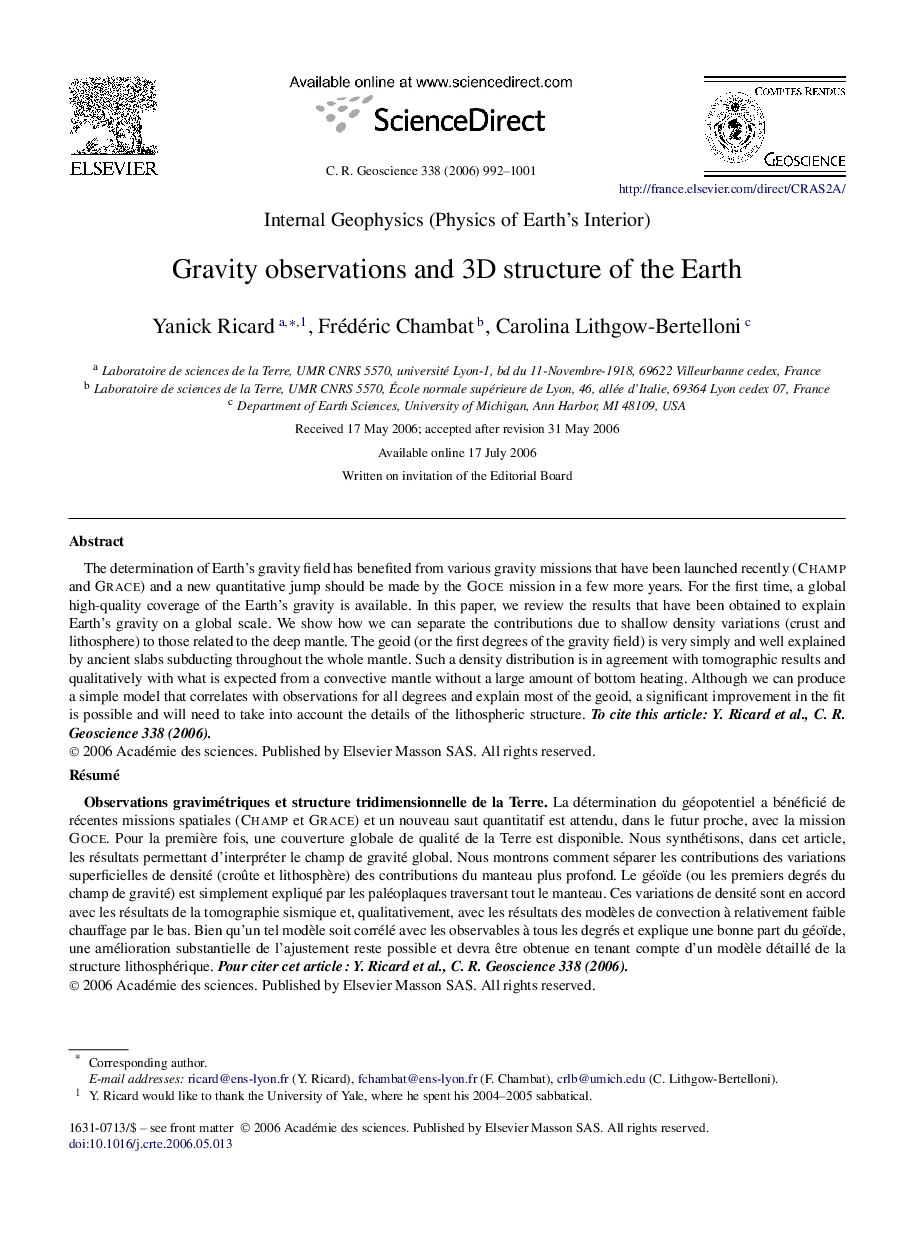| کد مقاله | کد نشریه | سال انتشار | مقاله انگلیسی | نسخه تمام متن |
|---|---|---|---|---|
| 4462942 | 1621580 | 2006 | 10 صفحه PDF | دانلود رایگان |

The determination of Earth's gravity field has benefited from various gravity missions that have been launched recently (Champ and Grace) and a new quantitative jump should be made by the Goce mission in a few more years. For the first time, a global high-quality coverage of the Earth's gravity is available. In this paper, we review the results that have been obtained to explain Earth's gravity on a global scale. We show how we can separate the contributions due to shallow density variations (crust and lithosphere) to those related to the deep mantle. The geoid (or the first degrees of the gravity field) is very simply and well explained by ancient slabs subducting throughout the whole mantle. Such a density distribution is in agreement with tomographic results and qualitatively with what is expected from a convective mantle without a large amount of bottom heating. Although we can produce a simple model that correlates with observations for all degrees and explain most of the geoid, a significant improvement in the fit is possible and will need to take into account the details of the lithospheric structure. To cite this article: Y. Ricard et al., C. R. Geoscience 338 (2006).
RésuméLa détermination du géopotentiel a bénéficié de récentes missions spatiales (Champ et Grace) et un nouveau saut quantitatif est attendu, dans le futur proche, avec la mission Goce. Pour la première fois, une couverture globale de qualité de la Terre est disponible. Nous synthétisons, dans cet article, les résultats permettant d'interpréter le champ de gravité global. Nous montrons comment séparer les contributions des variations superficielles de densité (croûte et lithosphère) des contributions du manteau plus profond. Le géoïde (ou les premiers degrés du champ de gravité) est simplement expliqué par les paléoplaques traversant tout le manteau. Ces variations de densité sont en accord avec les résultats de la tomographie sismique et, qualitativement, avec les résultats des modèles de convection à relativement faible chauffage par le bas. Bien qu'un tel modèle soit corrélé avec les observables à tous les degrés et explique une bonne part du géoïde, une amélioration substantielle de l'ajustement reste possible et devra être obtenue en tenant compte d'un modèle détaillé de la structure lithosphérique. Pour citer cet article : Y. Ricard et al., C. R. Geoscience 338 (2006).
Journal: Comptes Rendus Geoscience - Volume 338, Issues 14–15, November–December 2006, Pages 992–1001